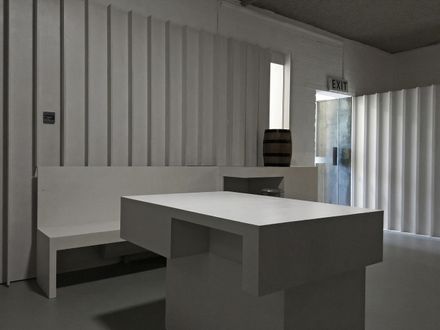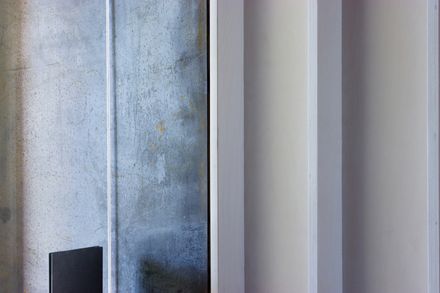The Crock Butter Museum
JOINERY
Modet Furniture
LEAD ARCHITECTS
Jason O'shaughnessy, Stephen Foley, Viktor Gekker
MAIN CONTRACTOR
Engage Construction
PHOTOGRAPHS
Jack Lehane
AREA
187 M²
YEAR
2019
LOCATION
Cork, Ireland
CATEGORY
Museum, Detail, Museum & Exhibition Interiors
These works consider the collection of artifacts and spaces in the Butter Museum. Reanimating a distinct historic urban field, they heighten the awareness of the socio-cultural roles of butter making in Ireland.
The programmatic limits for the re-design of the Butter Museum were established so that it would act in the traditional sense of artifact display.Working between 'flatness' and 'depth', we adopted a tactical design approach and dual position.
The design erodes existing boundaries and alters spatial limits - encouraging new juxtapositions and readings between objects and viewers.
The Butter Museum is part of a distinctive urban arrangement in Shandon, Cork. It is close to St. Anne's Church (1722) and is part of the original site of the Cork Butter Exchange — built in 1770 and added to by Sir John Benson in 1849 in the form of a monumental entrance portico with paired Doric columns. .
At street level, it is framed by the distinctive rotunda of the Benson-designed Firkin Crane (1855).
This was achieved by connecting different exhibit areas through a series of new spatial 'slits' and the installation of cabinet-like elements that mediate the artifacts.
On the other, it was intended as a space of performance — where live traditional butter-making demonstrations could occur with groups of visitors and school children and where public events like dance or folk-singing could take place.
In these ways, it allowed for distinct spatial 'slippages' between spaces - producing a space of ongoing performance
On one hand, it involved the installation of new critical services: a greeting space at the entry, a digital screening space, a live-demonstration area, and a working kitchen where glass butter-making instruments could be cleaned.
This involved the subtle eroding of existing walls and boundaries and installing a number of cabinet-like elements — subtly detailed to evoke whitewashed domestic and agricultural settings.
This involved the subtle eroding of existing walls and boundaries and installing a number of cabinet-like elements — subtly detailed to evoke whitewashed domestic and agricultural settings.
On the other, it was intended as a space of performance — where live traditional butter-making demonstrations could occur with groups of visitors and school children and where public events like dance or folk-singing could take place.
Untreated mild steel walls line interface points and a seamless new recycled rubber floor surface connects the series of new cabinet-like elements with whitewashed birch plywood skins — a thickened wall screen, benches, tables, and screens, and enact a choreographed exchange with the existing structure and artifacts.
These figural elements have a pronounced sense of theatricality and enact a pas-de-deux between body and space that shifts the viewer's relationship to the artifacts and objects in the collection.
Because of the mobility of movement in a number of them, they create different spatial arrangements and emphasise the contingencies of the space.
Manifesting a type of ongoing provisionality and compressed material range, they continually augment the space and generate different environmental qualities and atmospherical states - recalling the raw aesthetic and material settings associated with the production of butter.
In these ways, the overall space becomes highly sensorial; where distinct performative sequences produce new transactions - between subject/object, body/space/atmosphere, and between urban space and history.
Within this context, the design evolved as a [re]working and curatorial strategy -attempting to re-appraise the cultural and social historicities that are held in the Museum's collection.























